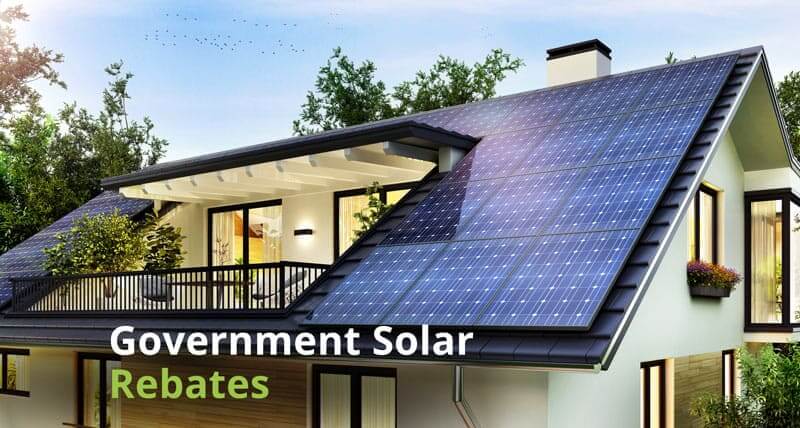Home Feed-In Tariffs Best Solar Feed-in Tariffs in NSW
Top 3 Solar feed-in Tariffs in NSW
Electricity providers will reimburse you at a market rate for any surplus solar energy you supply back to the grid. This scheme is known as a feed-in tariff or net metering. Although the rate you receive is less than what you would pay if you were buying energy, integrating this arrangement with your solar panels can substantially reduce your power bills.
Solar feed-in tariffs are slowly decreasing and are the lowest since the scheme started, but they still do equally large savings. This is a core reason to take battery storage as a better alternative. Also, there will be huge customer adaptation change for batteries in near future due to decrease in sudden prices.
Table of Contents
ToggleOur Top 3 Picks
You can see the full list of solar feed-in tariffs for NSW as offered at time of writing this artilce.
1. Sumo
The FiT prices have come down across the board in NSW over the last couple of years, just as energy prices have been skyrocketing. Sumo is currently the king of Feed-in tariffs in NSW with an unbeaten 8.1c/kWh [1].

2. AGL
AGL is also up there with a minimum 7c/kWh Fit and maximum feed-in tariff (c/kWh) of 15c/kWh. Keep in mind that 15 c/kwh for the first 10 kwh of daily export; rolls back to 7 c/kwh thereafter. The 15 c/kwh rate only applies to the AGL Solar Savers plan [2].
There are few other energy retailers like Red Energy, Momentum Energy and Origen present, but it took the number two spot because their supply usage charges are lower than the others.

3. Origin
Complete list of NSW feed-in tariffs
| Electricity Retailer | Max FiT | Contact Number |
|---|---|---|
| 8.1c | Go to site |
|
| 7.6c | Go to site |
|
| 7.0c | Go to site |
|
 | 7.0c | Go to site |
| 7.0c | Go to site |
|
 | 7.0c | Go to site |
| 6.0c | Go to site |
|
| 6.0c | Go to site |
|
 | 6.7c | Go to site |
| 6.2c | Go to site |
|
| 5.0c | Go to site |
|
| 5.0c | Go to site |
|
| 5.99c | Go to site |
|
 | 5.5c | Go to site |
 | 5.2c | Go to site |
| 4.4c | Go to site |
|
| 3.0c | Go to site |
The below prices were gathered from using the government Energy Made Easy resource.
How Does the Solar Feed-in Tariff work??
The Solar Feed-in Tariff (FiT) is a scheme where energy retailers buy excess solar energy you feed into the grid. This is energy you produce through the day, but don’t use. Typically households use 29% of their daily power during sunlight hours, while the remaining 71% is used at night.
If you do not have a battery to store this excess power for later use, it would go to waste.
Fit prices are always changing
The above FiT prices can be changed as per the requirement of solar retailer. But in current scenarios, these prices will be decreased in future for sure. This is why, solar batteries are becoming a more and more attractive option for home owners.
Why Is the Feed-In Tariff Lower Than the Cost of Electricity In NSW?
Electricity retailers are free to offer a rate that makes business sense to them based on other costs. Basically they pay you a wholesale price for energy you feed-in to the grid, but charge you retail for it. Another consideration is peak and off peak times.
FAQs
Feed-in tariffs durations differ from one electricity retailer to another and the agreement you sign with them while connecting. Some will be happy to offer a lifetime feed-in tariff so long as your solar PV system is connected to them while others will offer quarterly or yearly feed-in tariff contracts.
There are two main types of feed-in tariffs available for NSW residents, namely: net feed-in tariffs and gross feed-in tariffs.
- Net feed-in tariff – A net feed-in tariff refers to the payment you get for the surplus energy you send back to the grid from your PV system. You will be paid for the units in Kwh you “donate” back to the grid.
- Gross feed-in tariffs – are relatively new in Australia and are only available for customers with a new connection. A gross feed-in tariff is paid for every unit of electricity produced by your PV system as it’s all passed through the normal grid and fed back to you as normal power from the retailer.
Solar panel quality depends on the manufacturer and rated daily output in your location. Take time to shop around and find a high-quality solar PV system installed by an accredited solar agent. This will also help you claim the Australian rebate and feed-in tariffs.
Though rare in Australia, net metering refers to a connection where your normal meter is set to run backward based on the amount of electricity you are sending back to the grid. Feed-in tariffs on the other hand are measured with a separate meter that records the amount of energy being generated and fed to the grid.
- Kelseigh Wrigley, (n.a), Expert Guide: Sumo Energy Review and Rates, Accessed on 4th Feb 2024: https://www.canstarblue.com.au/electricity/brands/sumo-power/
- Kris Ceniza, (2023), Best Solar Feed-In Tariff – NSW | Comparing The Top Providers, Accessed on 4th Feb 2024: https://localbunch.com.au/best-solar-feed-in-tariff-nsw/
- Kelseigh Wrigley, (2023), Origin Energy Solar Review, Accessed on 4th Feb 2024: https://www.canstarblue.com.au/solar/origin-energy-solar/
- Jeff Sykes, (2024), Best NSW Solar Feed-In Tariffs, Accessed on 4th Feb 2024: https://www.solarchoice.net.au/learn/energy/feed-in-tariffs/best-nsw-fit/
Table of Contents
Toggle





